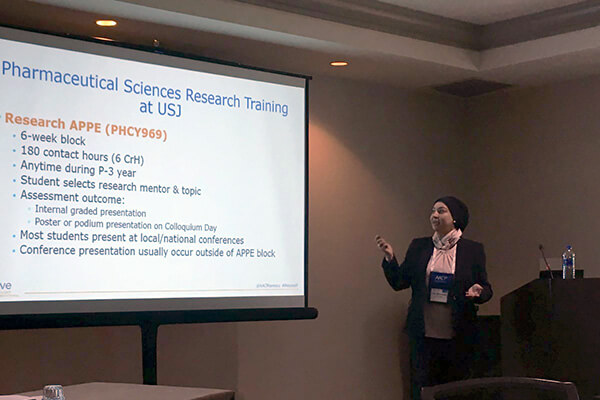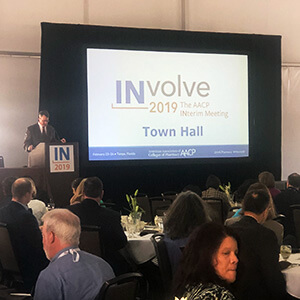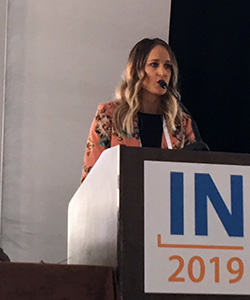Pharmacists joined voices to change perceptions and brainstorm strategies to transform the practice at INvolve 2019.
By Athena Ponushis
Academic pharmacists’ perpetual endeavor to aim higher was palpable in the presentations and conversations at INvolve 2019, the AACP Interim Meeting in Tampa, Fla., in February. The desire to better showcase who pharmacists are and what they can do informed the discussions. Dr. Damon Williams, chief catalyst at the Center for Strategic Diversity Leadership and Social Innovation, kicked off the conference speaking about how diversity takes courage. He focused on the courage to innovate, make faculty diversity a true priority, create meaningful pre-pharmacy bridge programs, commit dollars to the strategy and train the profession to be inclusive and make strategic moves.
“The way we increase the likelihood of making a diverse faculty hire is to increase the likelihood of making a diverse faculty hire, meaning we will search until our interview slate is diverse,” Williams said. “It’s about how we think about who we select to be the next cohort of Pharm.D. candidates. Do those individuals all have to have a recalculated GPA of 3.8 and above or could they maybe get by with a 3.3 and a whole bunch of grit and resilience and culturally relevant desires? That’s where we can grow, it’s those conversations, it’s taking something that’s not a qualified part of our selection matrix and making it a qualified part of our selection matrix, and that takes courage.”

As the former senior vice president and chief education officer at the Boys & Girls Clubs of America, Williams led the Great Futures Campaign for Impact, which he sees as his way of making ripples in the world. To attract a diverse talent pool, enrich the pipeline and reshape the portrait of a pharmacist, Williams suggested schools launch initiatives for middle- and high-school students, allowing them to try on that possible self of becoming a pharmacist.
“To reposition the image of a diverse pharmacist, you’ve got to understand, from the perspective of those diverse communities, what’s going to resonate with them,” Williams said. “Connect the pharmacy career path to that notion of your passion, your purpose and your why. ‘Pharmacists work in diverse communities, so you are going to be able to give back to your community. Pharmacists have to answer questions that are technical in nature but must be able to interface with people everyday. Pharmacists are able to live a lifestyle of economic freedom.’ Those are big things.”
Williams shared a lesson he learned from Rep. Donna Shalala, who formerly served as U.S. Secretary of Health and Human Services and as president of the University of Miami. When Shalala first arrived in Coral Gables, she looked around and saw students commuting but did not see students on campus having conversations. “She knew she needed to work on a bigger strategy and committed to that, but what she immediately did, she said, ‘I put the lawn chairs on the lawn,’” Williams said. “So I say to you, what are the lawn-chair moves you can make to advance this work today?”



